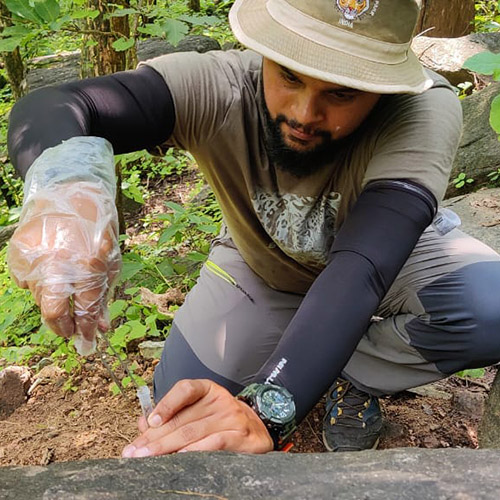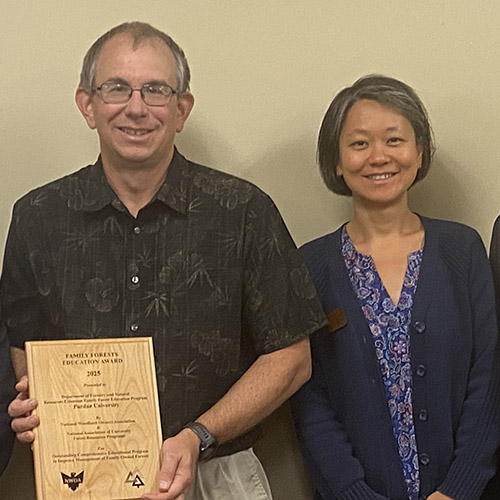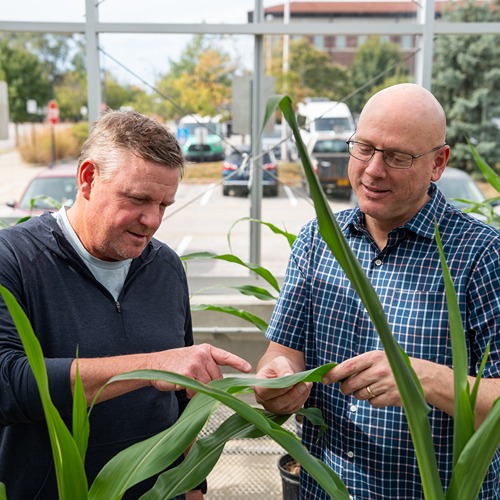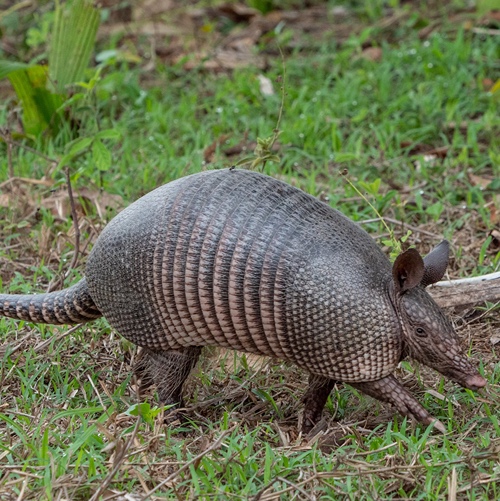Master's Alum Daniel Bird Contributes to Indigenous Wildlife Management Journal Issue
Daniel Bird, who was raised on the Santo Domingo-Kewa Pueblo Reservation in New Mexico and is an enrolled tribal member, created the cover art and contributed an article to the special Indigenous Wildlife Management in North America issue of The Journal of Wildlife Management, which was published in August 2024.
enrolled tribal member, created the cover art and contributed an article to the special Indigenous Wildlife Management in North America issue of The Journal of Wildlife Management, which was published in August 2024.
Bird completed his master’s degree research in Dr. Pat Zollner’s lab in 2018 and is now a PhD candidate in the wildlife biology program at the University of Montana.
The cover art Bird created for the Indigenous Wildlife Management issue features a bull moose, a black bear, a female white-tailed deer, a mule deer and a wolf, all species which are featured in the articles in the special issue. Bird explained, however, that the art includes much more than those animal species.
“The cover art also features subtle indigenous representations such as the geometric design that represents a ‘cloud,’ the footprints in the forefront not only represent indigenous peoples but the animals and our ecological interactions, and the petroglyph ‘rock art’ of a deer in the back represents the past,” Bird shared. “I was very excited to contribute the cover art for this special issue and very appreciative for the opportunity.”
The special issue focuses on how Tribal entities are working on wildlife conservation and management issues on tribal lands and beyond, ranging from habitat use of mule deer in the Pueblo of Santa Ana in New Mexico to stewardship of the North American moose and also addresses the use of Traditional Ecological Knowledge in the wildlife management profession as a whole.
issues on tribal lands and beyond, ranging from habitat use of mule deer in the Pueblo of Santa Ana in New Mexico to stewardship of the North American moose and also addresses the use of Traditional Ecological Knowledge in the wildlife management profession as a whole.
For his part, Bird contributed an article on “Temporal Habitat Use of Mule Deer in the Pueblo of Santa Ana, New Mexico.” The publication, co-authored by Laura D’Acunto, Daniel Ginter, Glenn Harper and Zollner, utilized the data that the Pueblo of Santa Ana had accumulated to gain a better understanding of mule deer ecology on their tribal land.
“This information is very important to the Pueblo of Santa Ana Department of Natural Resources and the tribe as a whole as mule deer are a culturally significant species and any additional knowledge that may help the tribe in managing for this species is very valuable,” Bird said. “The mule deer population on the Pueblo of Santa Ana have been steadily increasing after the tribe introduced a Wildlife Conservation Code approved by the tribal council, including tremendous habitat restoration projects and implementing management of livestock grazing. Potential findings were that mule deer may select habitat differently at different times of the day during the summer and winter and I predicted that mule deer we studied would produce similar results to studies done on mule deer in other areas.”
After using geospatial positioning system telemetry-collar data collected on female and male mule deer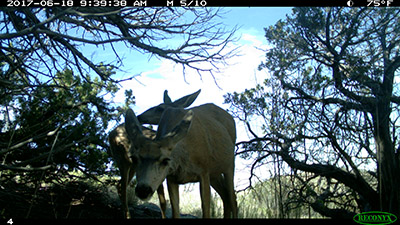 around the Pueblo of Santa Ana to create resource selection functions from proximity-based habitat predictors using a generalized linear mixed model, the findings of the study did not fall in line with Bird’s initial predictions. Instead, they showed that mule deer did not select for habitat types differently throughout the day, but their selection did change for habitat types from summer to winter. Bird explained further that mule deer on the Pueblo use habitat similarly to other places in regard to use of water and selection of areas near different road types.
around the Pueblo of Santa Ana to create resource selection functions from proximity-based habitat predictors using a generalized linear mixed model, the findings of the study did not fall in line with Bird’s initial predictions. Instead, they showed that mule deer did not select for habitat types differently throughout the day, but their selection did change for habitat types from summer to winter. Bird explained further that mule deer on the Pueblo use habitat similarly to other places in regard to use of water and selection of areas near different road types.
“One surprise from the research was that mule deer selected areas near paved and high use roads, which was surprising to both me and to the Pueblo of Santa Ana biologists,” he shared. “This research expands the information we have on mule deer in the Pueblo of Santa Ana. It also shows that existing habitat management practices are important for this species such as thinning of pinon/juniper, the removal of invasive non-native species from riparian habitats and providing more water on the landscape for large ungulates in semi-arid environments. This research reassures managers that these types of management strategies do help mule deer and that funding for these types of projects are very important.”
Bird says this work is an important step in combining Traditional Ecological Knowledge with modern science to create better management practices.
“This research fits into my overall continued research practice in continuing to advocate for partnerships with tribes in conducting this type of research and providing opportunities for tribal students to work on tribally relevant research,” he said. “I think this research moves things forward for both the Pueblo of Santa Ana and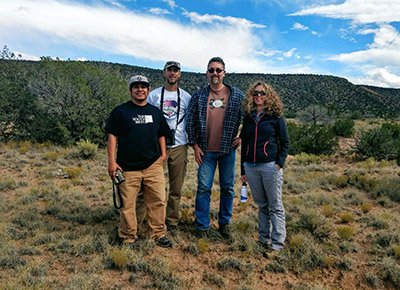 Purdue University for continued partnerships and a blueprint for other tribal students and tribes in general. A new understanding of the value tribal involvement brings to our field of wildlife science is another aspect this research brings.”
Purdue University for continued partnerships and a blueprint for other tribal students and tribes in general. A new understanding of the value tribal involvement brings to our field of wildlife science is another aspect this research brings.”
Although Bird’s initial work on mule deer on the Pueblo of Santa Ana is complete, he says next steps should include a look at management practices and how they change mule deer behavior over time. Additional research also could include the interaction between elk and mule deer and habitat use in this system to gain a better understanding of how one species influences the other.
For now, Bird’s focus is on his current PhD research studying elk migration patterns on the land of the Blackfeet Tribe in conjunction with local and state agencies, the United States Geological Survey and Montana Fish, Wildlife and Parks.

